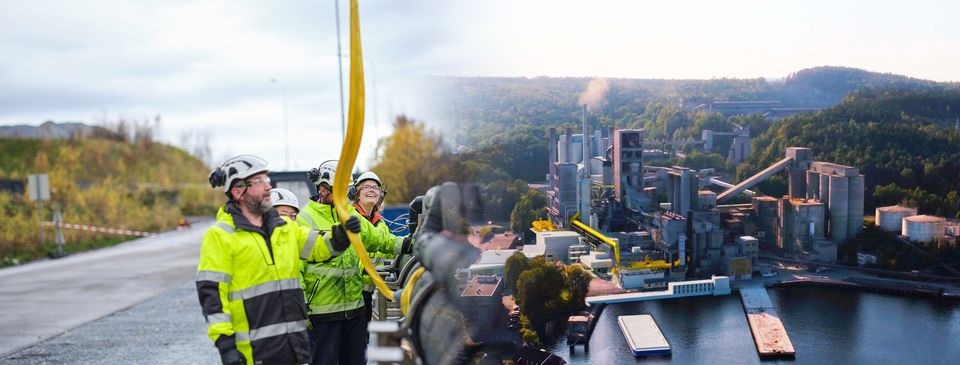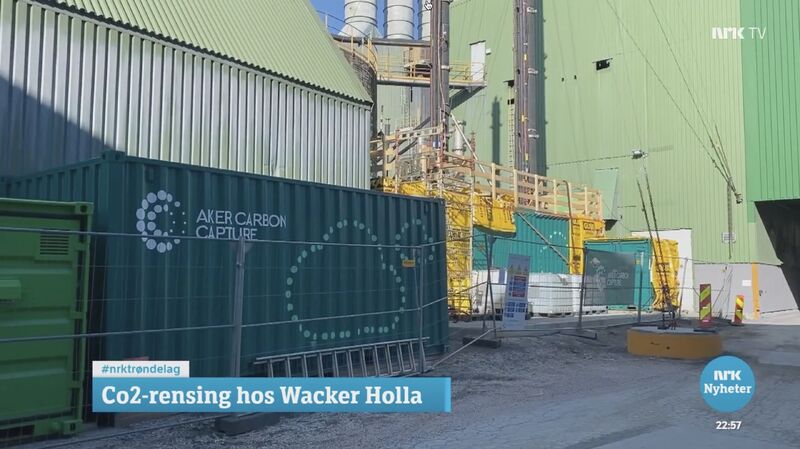
Aker Carbon Capture, a leading cleantech company, has secured a significant pre-FEED (Front-End Engineering Design) contract from Statkraft, a major Norwegian renewable energy company. This collaboration marks a crucial step towards achieving Norway's ambitious climate goals and highlights the potential of carbon capture technology in addressing global environmental challenges.

RELATED: Aker Carbon Capture Awarded Pre-FEED from Statkraft in Norway
Aker Carbon Capture and Statkraft: A Powerful Alliance for Carbon Capture
Aker Carbon Capture and Statkraft are important contributors in combating climate change. Aker specializes in advanced carbon capture technology, while Statkraft excels as a sustainable renewable energy producer. Their collaboration harnesses their respective strengths to speed up the progress of carbon capture solutions.
"We are excited to extend our collaboration with Statkraft. The decarbonization of the waste-to-energy industry is crucial in achieving Norway's ambitious climate goal of reducing greenhouse gas emissions by 55% by 2030," said Jon Christopher Knudsen, Chief Commercial Officer at Aker Carbon Capture. "By leveraging our product portfolio and ongoing projects, we maintain a robust position within the waste-to-energy sector," Knudsen continued.
The initial engineering design (pre-FEED) agreement centers around Statkraft's Heimdal waste-to-energy facility situated in Trondheim, Norway. The objective is to trap a considerable volume of CO2 emissions, approximately 220,000 tons per year, potentially leading to a 25% decrease in Trondheim's overall CO2 emissions. This showcases the significant influence that carbon capture can exert on reducing carbon footprints within waste-to-energy establishments - an essential area for attaining climate neutrality.

>> In Other News: Terra CO2 Wins “Decarbonization Solution Of The Year” In 2024 CleanTech Breakthrough Awards Program
Laying the Groundwork for a Sustainable Future
The preliminary front-end engineering design (pre-FEED) phase is an essential starting point in any large-scale engineering endeavor. At this stage, Aker Carbon Capture will conduct an extensive examination covering various aspects of capturing carbon dioxide at the Heimdal plant - including its compression, purification, liquefaction, temporary storage as well as exploring its transportation to a permanent storage facility.
Through careful planning and design during pre-FEED, Aker Carbon Capture and Statkraft ensure a seamless progression into subsequent development and construction stages while laying down crucial groundwork for a more sustainable future.
Carbon Capture: A Cornerstone of Norway's Climate Strategy
Norway aims to cut greenhouse gas emissions by an impressive 55% before 2030. Carbon capture technology is crucial in reaching this challenging target. By capturing CO2 from waste-to-energy facilities such as Heimdal, it effectively lowers overall greenhouse gas emissions while preserving the advantages of waste-to-energy for district heating. The Heimdal initiative sets an example for making the waste-to-energy sector more eco-friendly and supports Norway's path to achieving net-zero emissions.
The deployment of carbon capture initiatives, such as the one in Heimdal, goes beyond just helping the environment. It also holds promise for bringing positive changes to society and the local economy. This project could lead to new employment prospects while aiding in building a greener, more sustainable economy.
To make a project successful, it's crucial to involve all relevant parties. Aker Carbon Capture and Statkraft need to actively connect with the local community at every stage of the project. Dealing with issues, being open about what they're doing, and working together with stakeholders are vital for gaining public confidence and securing the long-term success of the project.
A Global Effort: The Ripple Effect of the Statkraft Collaboration
The initial funding approval for the Heimdal project has far-reaching importance, not just within Norway but also on a global scale in combating climate change. This partnership demonstrates an effective model for integrating carbon capture technology into waste-to-energy processes, setting a precedent for comparable initiatives worldwide.
The triumph of the Heimdal project has the potential to motivate and prompt other nations to investigate carbon capture solutions as an effective approach for reducing emissions. Aker Carbon Capture and Statkraft, by working together, are influencing the development of carbon capture technology and aiding in creating a greener planet.
The initial engineering design contract given to Aker Carbon Capture by Statkraft is a major step forward in reducing carbon emissions from waste-to-energy processes. This partnership between key players in the industry showcases how carbon capture technology can help reach climate targets. As technology progresses, engaging stakeholders effectively remains crucial.
Subscribe to the newsletter
Daily decarbonization data and news delivered to your inbox
Follow the money flow of climate, technology, and energy investments to uncover new opportunities and jobs.
Latest issues
-
How 45Q Credits Revived This Troubled $9B Megaproject
Inside This Issue 💰 How 45Q Credits Revived This Troubled $9B Megaproject 🍁 Commencement of First Phase Operations for a Carbon Capture and Storage (CCS) Project in Canada 🤝 Haffner Energy Secures...
-
The Deal Structure Everyone's About to Copy
Inside This Issue 💼 The Deal Structure Everyone's About to Copy 📈 Exxonmobil Raises Its 2030 Plan – Transformation Delivering Higher Earnings, Stronger Cash Flow, and Greater Returns ⚡ Nextera Wor...
-
Inside XCF Global's $300M Bet to Double U.S. SAF Output
Inside This Issue ✈️ Inside XCF Global's $300M Bet to Double U.S. SAF Output ⚙️ Capsol Technologies Signs MoU with US Utility to Deploy CapsolGT® for Low-carbon Gas Power Generation 🏭 Babcock &...
Company Announcements
-
Clean Planet Technologies (CPTech), part of the Clean Planet Group, has announced that its core pyrolysis-oil upgrading process has now been formally patented in both the United States and Saudi Ar...
-
(December 12, 2025 - Oslo, Norway) Nel ASA (Nel, OSE: NEL) is pleased to announce that following a seven-year development program, and now a successful start-up and production of clean hydrogen on ...
-
Hydrogen Technology Venture Launches in Bowling Green
BOWLING GREEN, Ky. — A new tech company is coming to Bowling Green, bringing dozens of jobs to Warren County. What You Need To Know UFS ARK will be a joint venture of United Fiber Sensing and OgM...
-
HyOrc Positions Green Methanol as the Economic Solution to Shipping’s Decarbonization Challenge
HOUSTON, Dec. 12, 2025 (GLOBE NEWSWIRE) -- HyOrc Corporation (OTCID: HYOR), a fully SEC-reporting clean-energy company focused on decarbonizing heavy industry, today commented on the growing global...